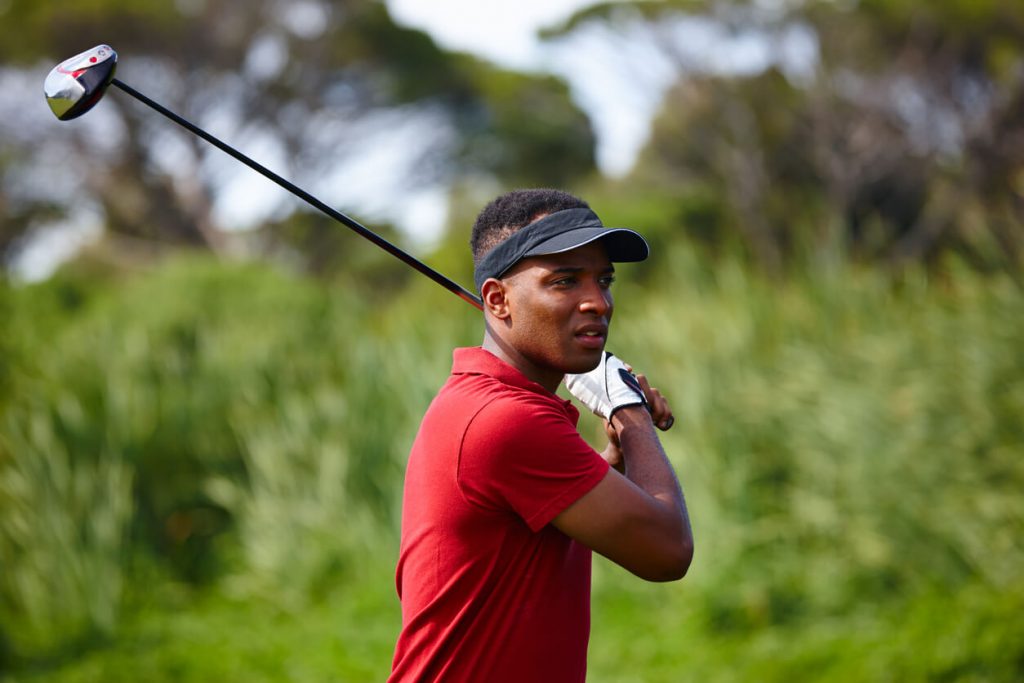The Golfer’s Checklist: 5 things to make sure you get right this year

If we’re being honest—most of us don’t play much golf until the spring, but we can definitely use the winter months to improve our mental game.
Winter is the perfect time to think
about your on-course habits and train yourself to stop making the same mistakes
you’ve been making time and time again.
In this article, golf performance coach Duncan McCarthy talks us through his golfer’s checklist, looking at what to get right this year, and how to keep improving your mental game.
The golfer’s checklist
1. Stop the moaning
There’s nothing worse than a bad lie
in the rough, or worse, a bad lie in the fairway. However, please try and
remember that we’re playing an outdoor game; battling the elements on uneven
ground, often on old courses that have been there for a long time and have been
played by many different golfers.
So, bad lies are always going to happen—it’s part of the game. Many react to this by either letting their playing partners know or by moaning internally that the ‘golfing gods’ are against them that day.
The one skill many golfers lack is
acceptance. This is one of the greatest skills you can ever learn for golf and
possibly even for life in general. Accept the poor lie to allow the mind to
focus on the task at hand.
Instead, though, what many golfers do is move forward physically, but the most important aspect—the mind—is still sitting in the past, moaning about the poor lie. And guess what? The result is a poor one.
So, the next time you reach your ball in a poor lie, don’t blame the golfing gods—accept it, refocus, and execute the best shot you can.
2. ‘I hit it great in practice’

Don’t we all?
Unfortunately, however, we are more often than not judged by our handicap or our performance in competitive rounds. Yet how and why can we hit it so great in practice yet so poorly on the course?
Well, the answer is simple: state.
We are surrounded by states, states of people. Happy state, sad state,
frustrated state, calm state, the list goes on. We have to become mindful of
the states we create for ourselves because some can be very beneficial while
others can be harmful.
In practice, be aware of the state you’re creating. My guess is that you’re probably in a relaxed and calm state. Some may start that way but move into a frustrated and annoyed state if they hit a poor shot, for example.
Are the last two states really good
for golf? Not a chance, and certainly not in practice, because if you’re
training yourself to get annoyed and frustrated at poor shots in practice—guess
what will happen in play? You’ll become frustrated and annoyed on the course,
too.
So, next time you’re practising, become aware of your state and maintain a consistent one throughout your entire practice session, regardless of results. You may well see a reflection of this in your play.
3. It’s just a putt


Everyone misses putts. The average percentage of putts made on the PGA Tour from six feet is something like 65%. Those guys are pros, yet so many handicap golfers get frustrated when they miss from six feet.
What’s the difference between pro golfers and non-pros, though? Well, yes, they practice and play more because it’s their job and so on—but you’ll often find that those players who we see week in, week out on TV don’t bring baggage to the putt, while amateur golfers do. They bring the fact that this putt is for par or a point, whereas a tour player brings no baggage—instead just an acknowledgement that this is a putt and it requires two things: a chosen line and a good pace to roll the ball.
So, the next time you find yourself missing putts, first of all, accept you always have and always will miss putts—even the world’s best do—but then refocus on choosing your desired line and pace. Then, just enjoy the opportunity of rolling the ball into the hole.
4. That 1st tee shot


People watching, expectation levels
high, your practice has gone great—these are just some of the triggers on the 1st tee. Of course, we want to hit a great opening tee shot, but in order to do
this, we need a quality process.
However, the average golfer is often more focused on getting a good result from the shot when their focus should actually be more on the process of the shot.
What I mean by process is acknowledging
any nerves you may have by embracing them and knowing that they’re often just a
sign that you’re ready to play. This should then be followed by a quality shot
decision, which, over time, helps lead to a great pre-shot routine.
Most golfers will have heard about
pre-shot routines and most probably have one, but there’s a huge difference
between a pre-shot routine that looks good and one that actually engages the
mind.
Hitting a good opening tee shot is what every golfer wants, but there’s a bigger picture to that first shot. The first shot has the same importance as any other shot during the round, but labelling this one as especially important will only make you feel pressured, which can tighten your muscles and lead to poor shots.
So, keep that bigger picture in mind. Every shot has the same level of importance, whether it’s the first or last one of the round. Let’s pick that smart shot to play, zone in on our target, and execute the shot with commitment. If we do this, we’ll have done all we can.
5. The bogey hole


Firstly, what is a bogey hole?
You’re probably imagining a hole where you’ve not had much luck or recent
success. Well, the truth is that you’ll only think you have a ‘bogey hole’ if
you choose to dwell on past experiences.
Remember that the past and present (and even the present and future) do not belong together. They are separate. If you’re thinking about what has happened on a certain hole in the past, no matter how bad or often, then you are in the past and, therefore, can in no way be in the present mentally. To be truly in the present is to focus solely on the shot in front of you with no baggage from the past.
So, next time you’re out on the
course and walking to the tee of your so-called bogey hole, just accept that
the past is the past, and we’re now in the present. Once in this mindset, we’re
more likely to make better decisions and go through our shot routines with a heightened
focus on our targets.
If we achieve this process, we have successfully executed our shot. The result might be poor, but if the process is good, then we increase the opportunity of the result being great.
About Duncan
Duncan McCarthy is a mental coach who works across all tours with golfers, including Marcus Armitage, Erik van Rooyen and Major champion Ashleigh Buhai.
Checklist sorted? You may also want to make sure you’re protected with specialist golf insurance before your next round.
With Golf Care, policies include Equipment Cover up to £7,500 and Public Liability up to £10m so you can play with peace of mind.
Click on the banner below to learn more and get a quote.









